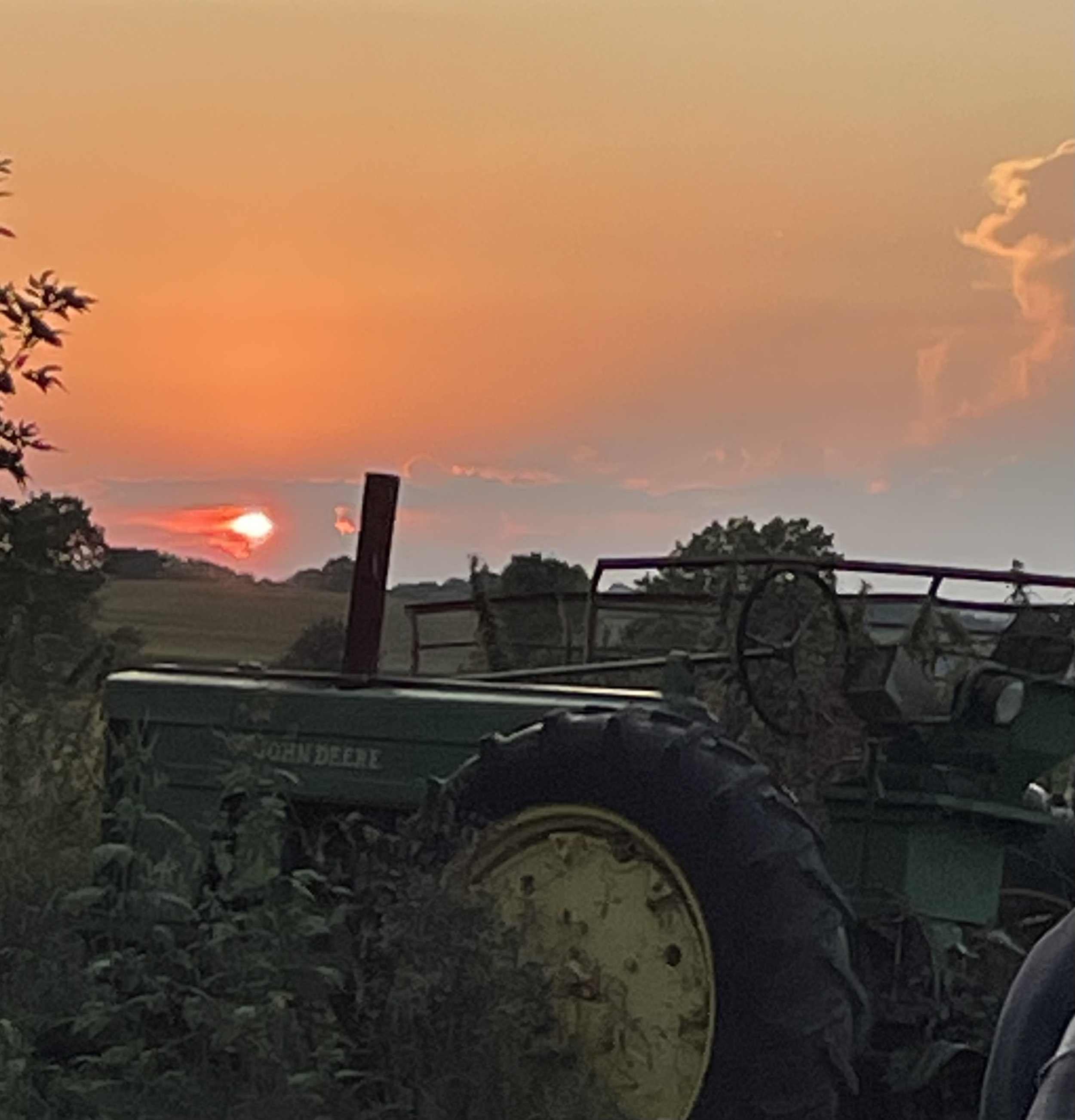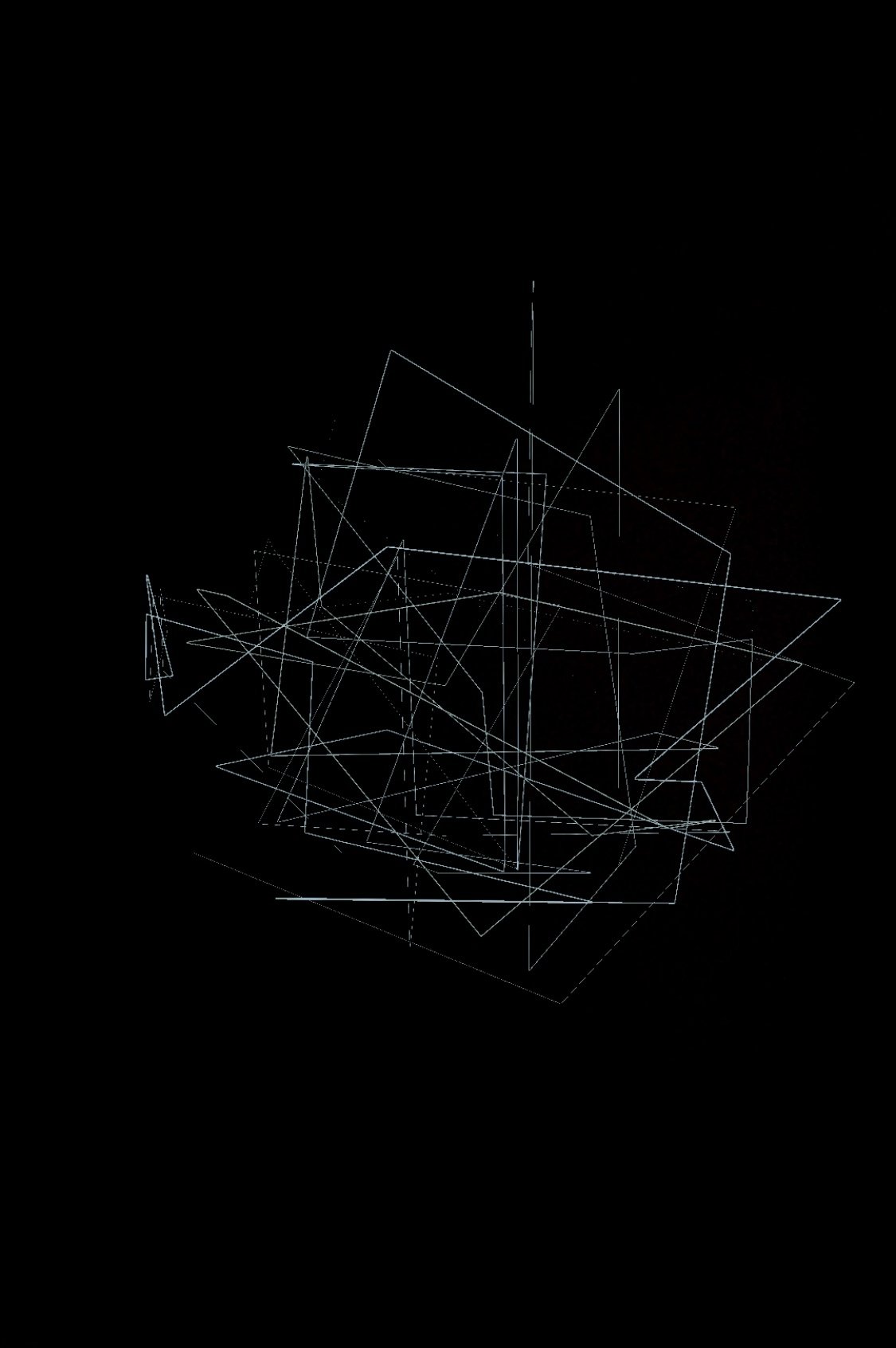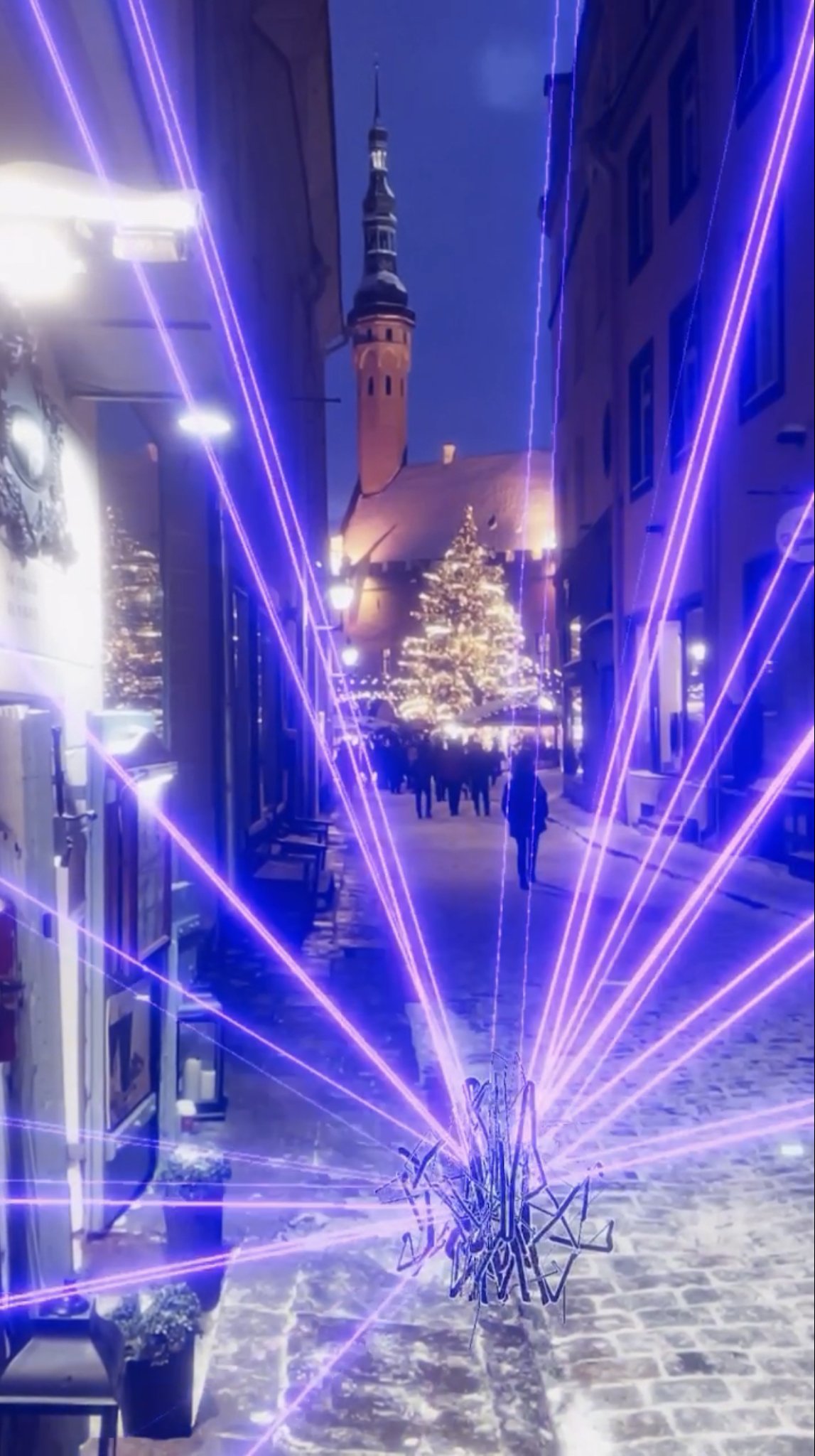Augmented Reality Apps
My work with AR grew out of my interest in Virtual Reality. I’ve grown more optimistic in the future of AR for its flexibility and convenience. It aligns with my aesthetic interest in juxtaposing artificial/man-made forms with the raw and organic forms of the world around us. The apps I have been developing tend to work with elemental shapes and lines, inspired by the earliest computer generated art and architectural drawing.

hARvest
hARvest uses augmented reality (AR) to project its animated graphic score at the site of its performance. The audience can watch the graphic score using an app on their smartphone or tablet. Zeitgeist premiered hARvest at Barringer Family Farm Technology Days with the score geolocated over the fields of the farm.

The MKHP app generates an AR sculpture inspired by the computer line art of the 1950s while you to listen to a recording of the composition, composed in collaboration with Pat O’Keefe. Point your phone or tablet where you want to see the sculpture manifest, tap the screen, and it will slowly draw itself into existence, reacting to the audio of the recording in a unique way each time.
MKHP

AD 1aa (for Auto-Destructive programming version 1, generation aa) is the first app I built to generate an AR sculpture. The audio was generated in Kyma using an auto-destructive approach; as the program operates, it gradually fails through use. I began exploring this early in 2020 as I realized my ecosystemic programming was fundamentally utopian. I had been designing systems of generative and reactive audio that were programmed to find harmony in their sonic ecosystems and operated in perpetuity. Somehow, auto-destructive programming seems like a more honest reflection of the environment my music exists in.